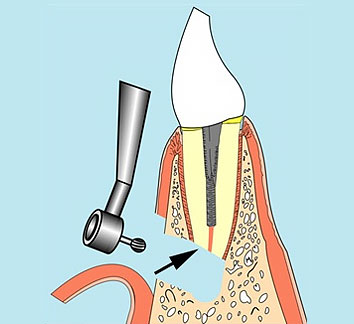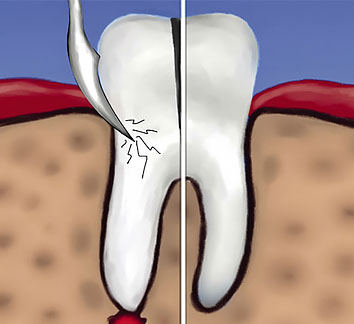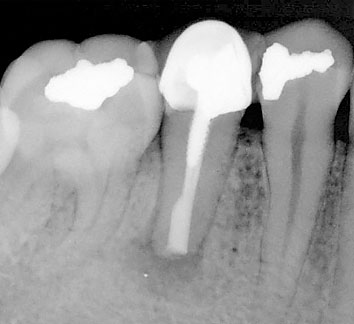
Root canal treatment usually takes 2-3 visits. The length of each visit and the duration between visits will depend on the nature of work to be performed and the extent of infection. In some cases where there is no infection and root canal treatment is performed from a restorative point of view, the procedure can be completed in one visit.
Most of the pain associated with a root canal is felt before treatment. In some cases the tooth is highly sensitive while in others a throbbing pain is felt which may be accompanied by a swelling. There is usually some difficulty in eating.
The actual treatment itself is not necessarily painful. In cases with hypersensitivity, an anaesthetic injection is given to numb the area after which the patient usually does not feel anything. In cases with severe infection, antibiotics are prescribed to control the infection and hence the pain.
For the first few days after treatment, the tooth may feel sensitive, specially if there was a lot of pain or infection before treatment. If so, you may be advised a painkiller or even antibiotics.
Damage to the pulpal tissue may occur without any pain and hence go undetected for months or even years. There may have been prior pain, but because it was brief it could have been forgotten. Your dentist may advise a root canal based on the following observations:
Although currently pain free, if left untreated a damaged tooth could eventually flare up. If a root canal is advised, it is in your best interest to have the tooth treated before further damage occurs.
A small percentage of root canals may get re-infected due to the following reasons:
In some cases the infection persists or recurs around the tooth even after routine root canal therapy has been completed. In such cases it becomes necessary to surgically access the infection through the gum and bone tissues and clean it out from around the root of the tooth. This is called "Surgical Root Canal Therapy" (SRCT).
There are different types of endodontic surgeries. The most common is the Apicoectomy where an opening is made in the gum region of the problem tooth and the infected tissue removed along with a part of the root. The end of the remaining root is then sealed with a small filling, stitches are made in the gum tissue and healing generally proceeds uneventfully.

Root Amputation (selected removal of roots)

Hemisection (dividing the tooth in half)

Intentional Replantation (removing and reinserting the tooth)
It is important to evaluate the healing process after root canal treatment. This is normally done 6-9 months after completing your treatment. You are requested to return for the follow-up appointment, during which your tooth is examined and an x-ray taken to evaluate the healing.
Call Us or Book Your Appointment Today
Book Appointment